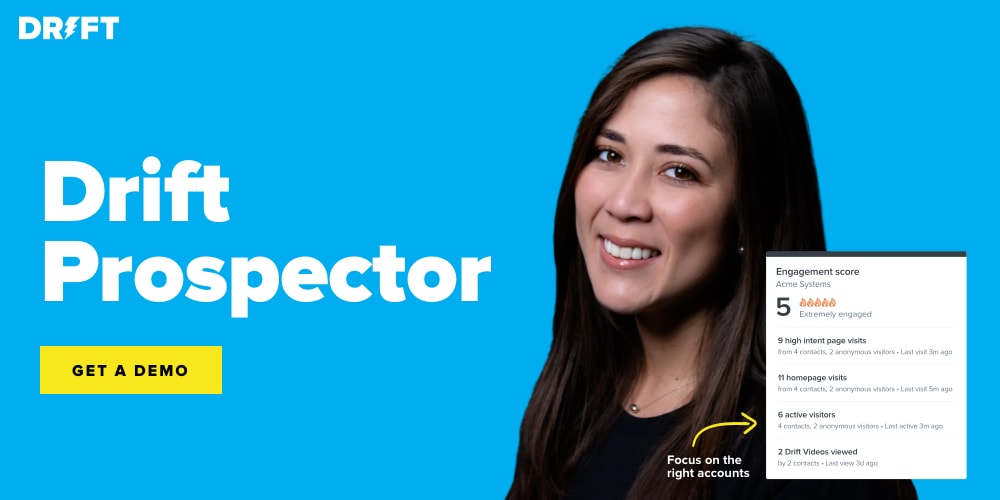There’s less than a month left in 2020. Soon, your prospects will be setting up their out-of-office replies and turning off their notifications for the holidays. But don’t despair. This is actually the best time to take strategic action to hit your sales quota.
After all, plenty of budget holders are looking to spend their remaining budget right now (to make sure that amount isn’t smaller next year). Budget holders might also be looking at their financial plan and goals for 2021 and researching the resources they might need. Unfortunately, only 48% of SDRs are consistently hitting quota.
If you feel like your team is in need of some fresh tactics to rev them up for the remainder of the year and meet their quotas, then keep reading. As Head of Sales Development at Drift, I know how much these strategies help our own teams power through EOQ.
1. Discover Your True ICP
A lot has changed since March 2020, am I right? That’s a given. What’s not so certain is how your ideal customer profile (ICP) has changed. If you haven’t taken a good hard look at your ICP and reevaluated it through the lens of market shifts, I encourage you to do it now.
When COVID first hit, small businesses were the fastest to reduce their budgets. Then, when their revenue started to get back to normal levels, they started spending again in summer. Meanwhile, enterprises – which are much slower movers – were operating as usual until summer, and then they began to cut back. Your ICP might shift based on market trends like these, so put your ears to the ground to discover what companies are buying solutions right now.
2020 highlights all of the things we should’ve been doing all along. You should always reevaluate your ICP a few times a year.
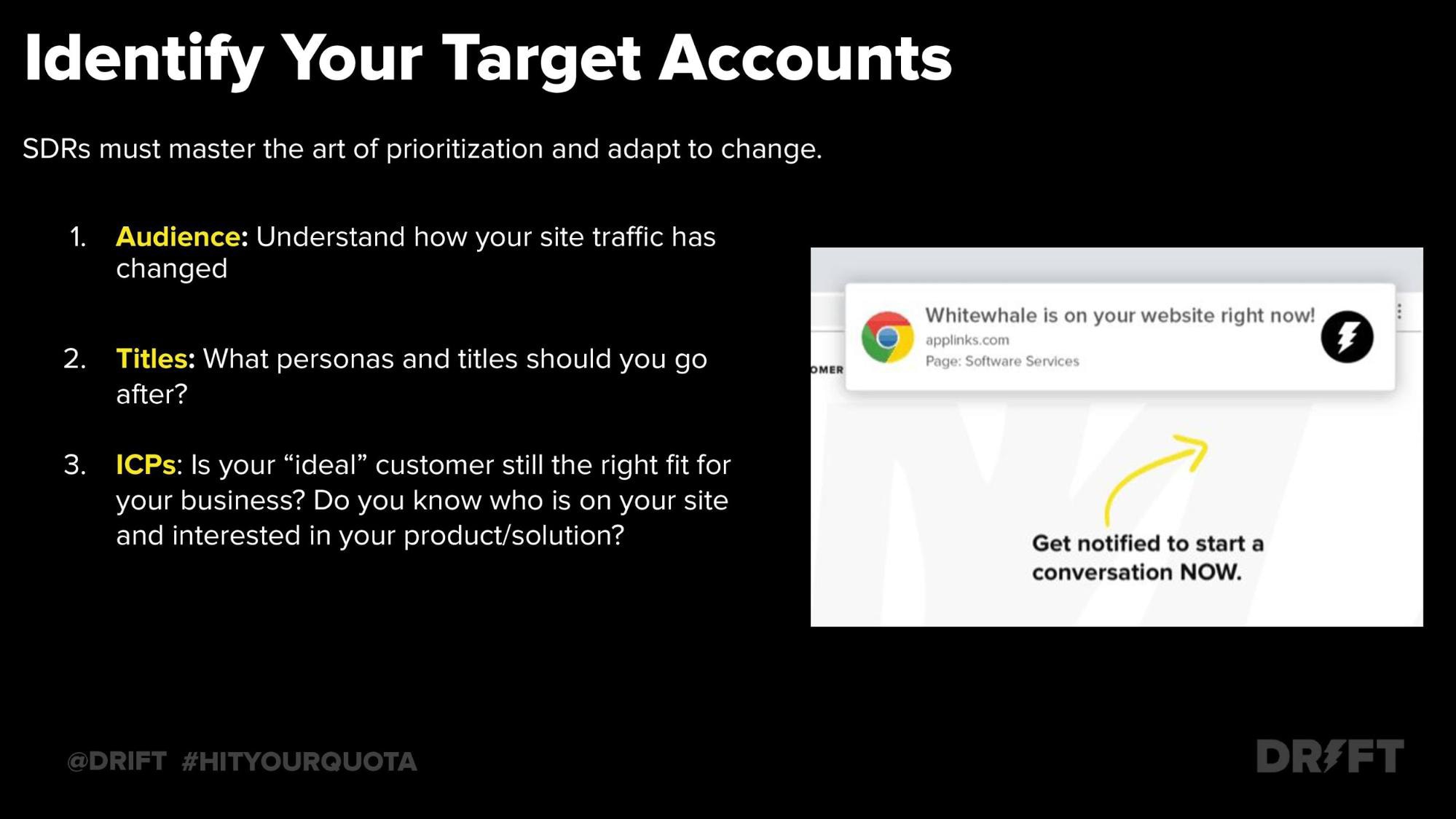
The good news is that it’s never too late. There’s always plenty more to learn. Start by discovering how your inbound website traffic has changed, how the titles of the decision-makers might have changed, and what industries or company sizes are the best fit right now.
2. Prioritize Your Target Accounts
One of the smartest things you can do is to make sure your SDRs are prioritizing their target accounts. If your SDR team isn’t doing this well, then they won’t book as many meetings, simply because they’re only factoring ICP criteria into who they reach out to, instead of incorporating inbound interest signals and timeliness as well. Do this right, and you’re going to see a really fast uptick in meetings booked and more members of your team hitting their sales quotas.
They should prioritize which accounts to devote the bulk of their time to, based on intent signals, industry, company size, and other factors.
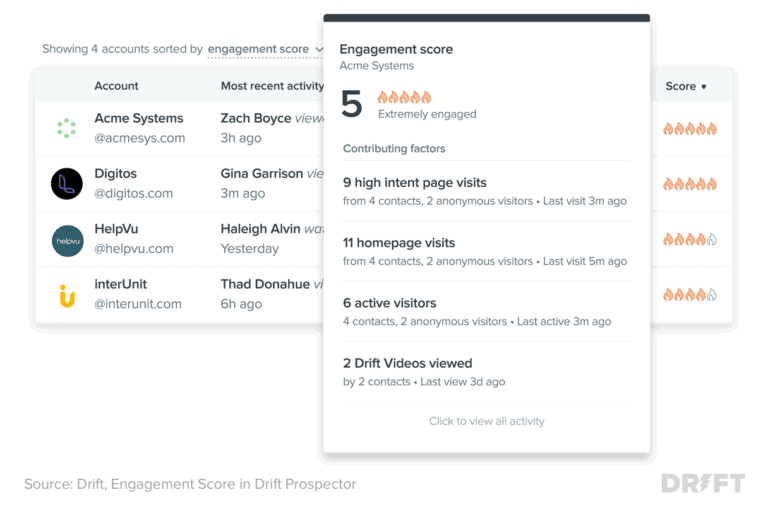
Drift Prospector relies on AI and all of your data sources to deliver recommendations on how to prioritize accounts and who to contact. This is super important because SDRs are typically earlier in their career and don’t stay in their role long, they can’t rely on industry experience to choose which accounts to prioritize. They need a little help from AI.
3. Personalize Your Outreach to Each Member of the Buying Committee
With an average of 6.8 buyers involved in every B2B buying decision, there are a lot of cooks in the kitchen. And all of these cooks care about different ingredients. Let’s say you’re selling PR software. The vice president of communications will care about different features than the communications manager, who in turn has priorities that don’t exactly match those of the two brand journalists.
But all of these decision-makers have individual potential to become champions of your product and convince the others.
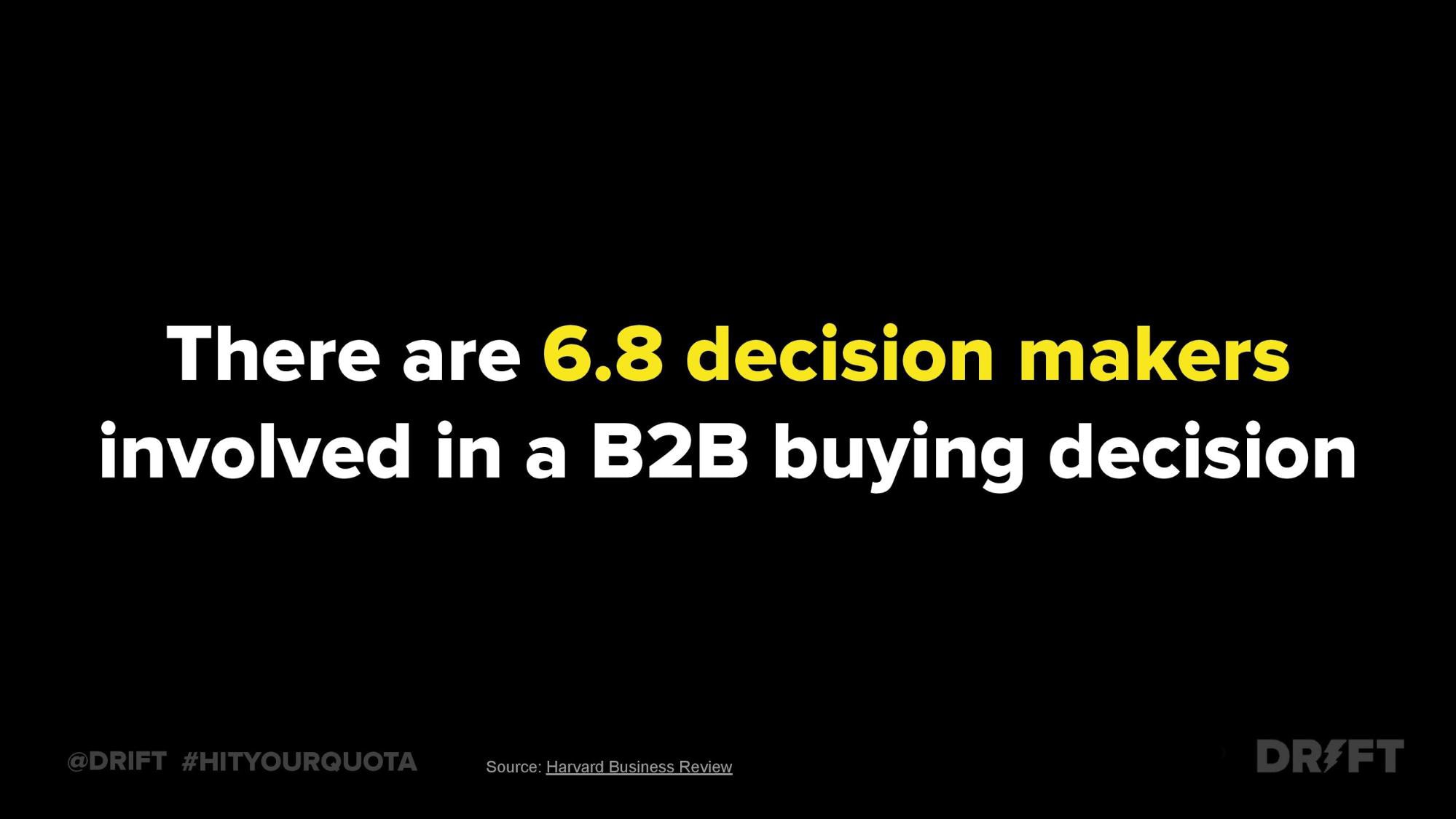
Too many SDR teams are still treating all of the decision-makers the same.
Same outreach strategy. Same channels. Same messaging.
Spend some time tailoring your messaging to their needs and choosing the channels that different titles are most likely to use, based on their workflow and typical demographics.
A smart way to do this is to look at the categories of buyers and hone in on each one with unique messaging and targeting:
- An economic buyer has the ability to shift budget from one project to another. Play into their priorities.
- Management is close enough to the end-user to understand their day to day challenges but also connected to the business strategy. Focus your messaging on both.
- End users can provide information on the challenges they face and often have a secret vote in the buying process since they are the ones that will need to implement and execute. Leverage their challenges, and use their responses as research to make your messaging better over time.
4. Use Video for an Extra Personal Touch
Is your team making great use of sales videos?
Maybe you haven’t given it enough attention. I get it.
It’s easy to overthink video to the extent that it morphs into too big an ask. It gets pushed aside.
But video is simple. It’s all about adding an extra personal touch to your prospecting. That’s it. Our SDRs use video to personalize outbound sales sequences and the results speak for themselves.
Rather than list off tips about how to talk succinctly, I’m going to just tell you exactly what Tate Knapp (one of our SDRs) says 👇
To watch the full video, just click here.
5. Rely on Intent to Improve Your Outreach
LinkedIn, news updates, and other platforms can teach you how ready your prospects are for your solution (and the nature of their intent). You can discover relevant information about the company that queues you into how likely they are to buy from you, and when.
Use an intent signals platform like ZoomInfo, 6sense, or Demandbase to stay up to date on the following:
- General news coverage and press releases
- Funding announcements and amounts
- Mergers and acquisitions
- New hires and product updates
- Technology added or dropped
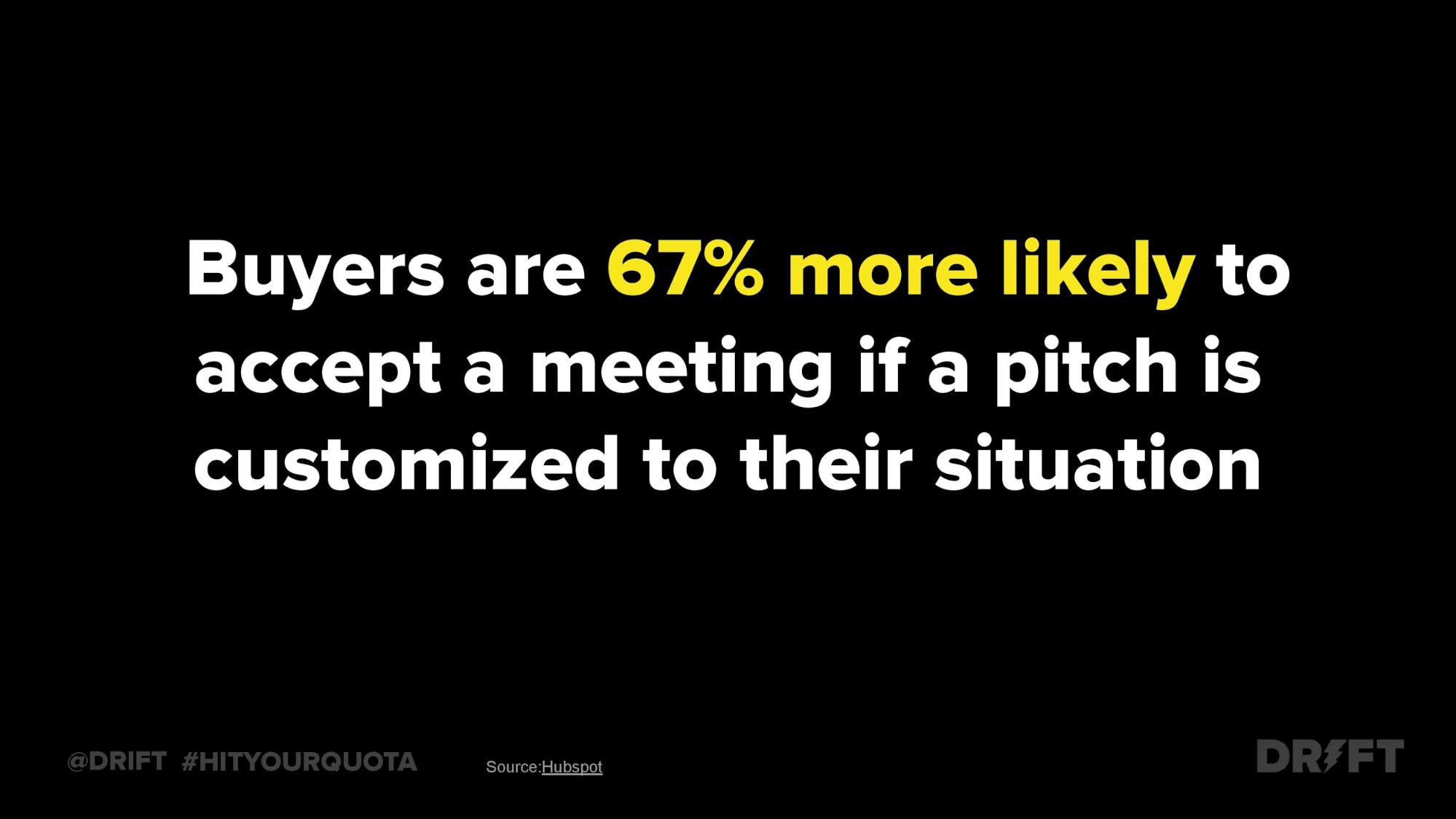
By incorporating these factors into your customized messaging for your priority accounts, you can increase your response rates by somewhere around 50%. This is the effect we’ve seen here at Drift.
6. Make Better Use of Inbound Data
It would be silly to treat all inbound leads the same – and yet that’s what a lot of businesses do. Instead, separate your inbound leads into hot leads and warm leads.
You can separate them based on the business problems they have and their engagement with your website (they’ve downloaded five ebooks and viewed your pricing page five times versus doing those things once).
The hot leads will be added to your CRM and treated more like an inbound lead. Meanwhile, the warm leads will be treated partly as an inbound lead and partly as a prospect. You’ll have an account executive or SDR continue to prospect them until they become a hot lead.
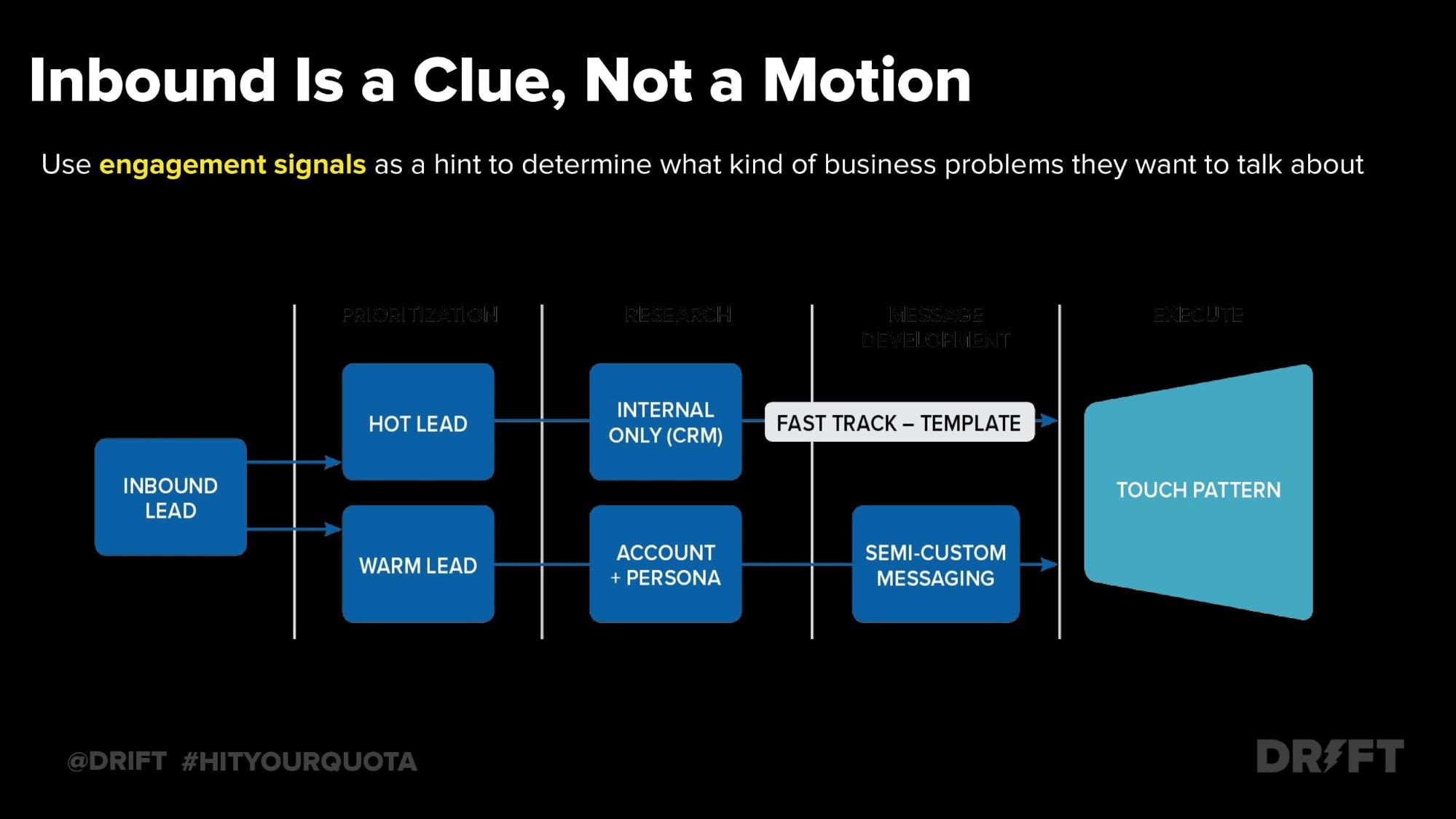
There are more ways to make your inbound data count. You can also use it to help you reevaluate your ICP and change outbound messaging or target titles.
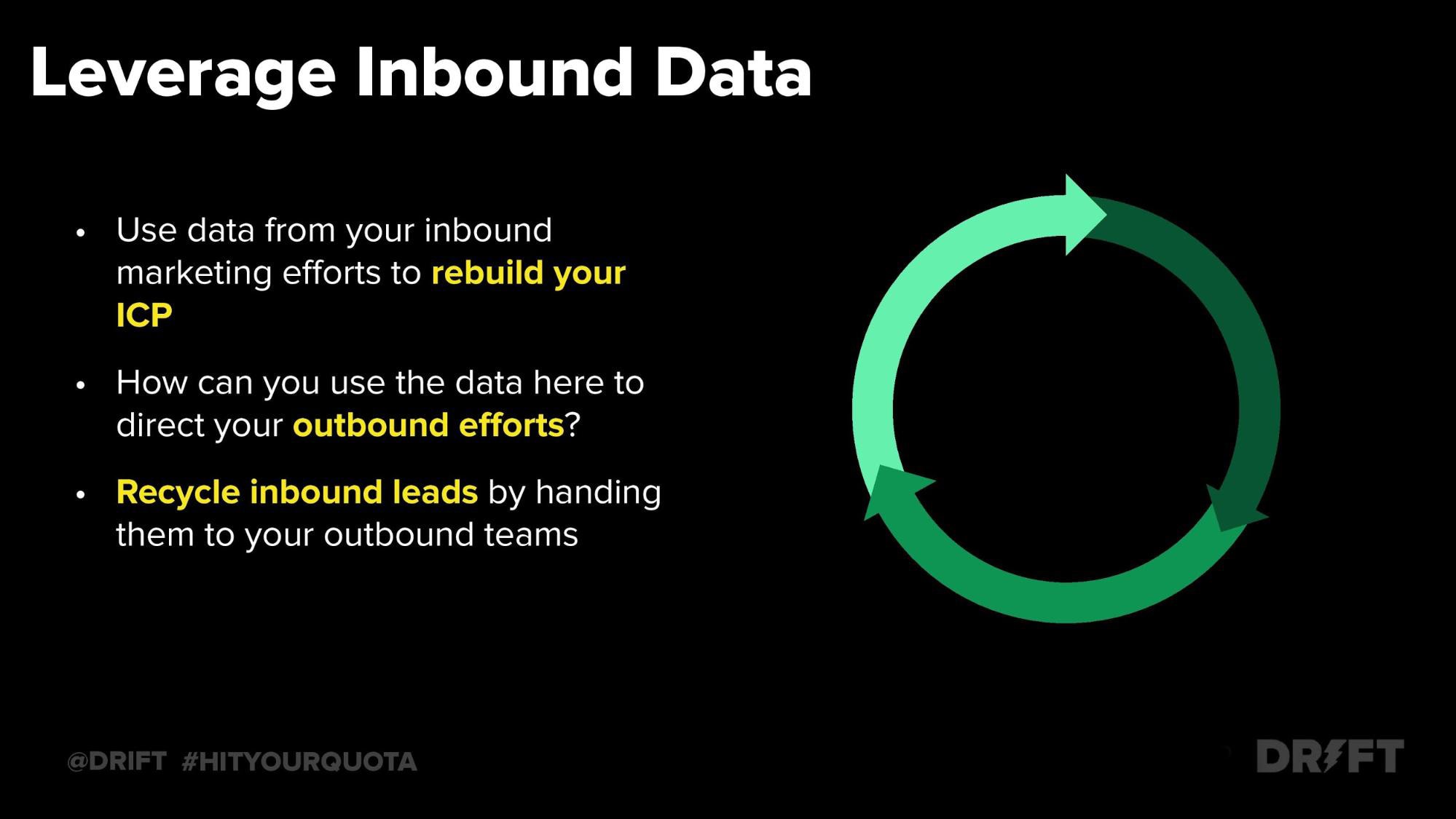
The most underutilized strategy of all? Handing over lukewarm and cold inbound leads to your outbound SDR team.
Don’t let any lead fall off your radar. These are prospects that have interacted with your brand, whether they attended a webinar or downloaded a white paper. Either way, you’ve got a good indicator that these prospects care about challenges you solve, even though they haven’t taken the initiative to raise their hands quite yet. This makes them an incredible source for the kind of outbound prospecting that helps you hit your sales quota.
7. Cluster Outbound Activity Across Different Channels
Here’s the deal with cold LinkedIn messages: we don’t book as many calls from them as we do cold email and cold calls.
But what we do get is brand awareness across different channels. It takes somewhere between 5 and 20 touchpoints to make a sale.
Clustering your outbound activity helps you swarm a prospect in an unobtrusive way. You show up and build that brand awareness without frustrating them.
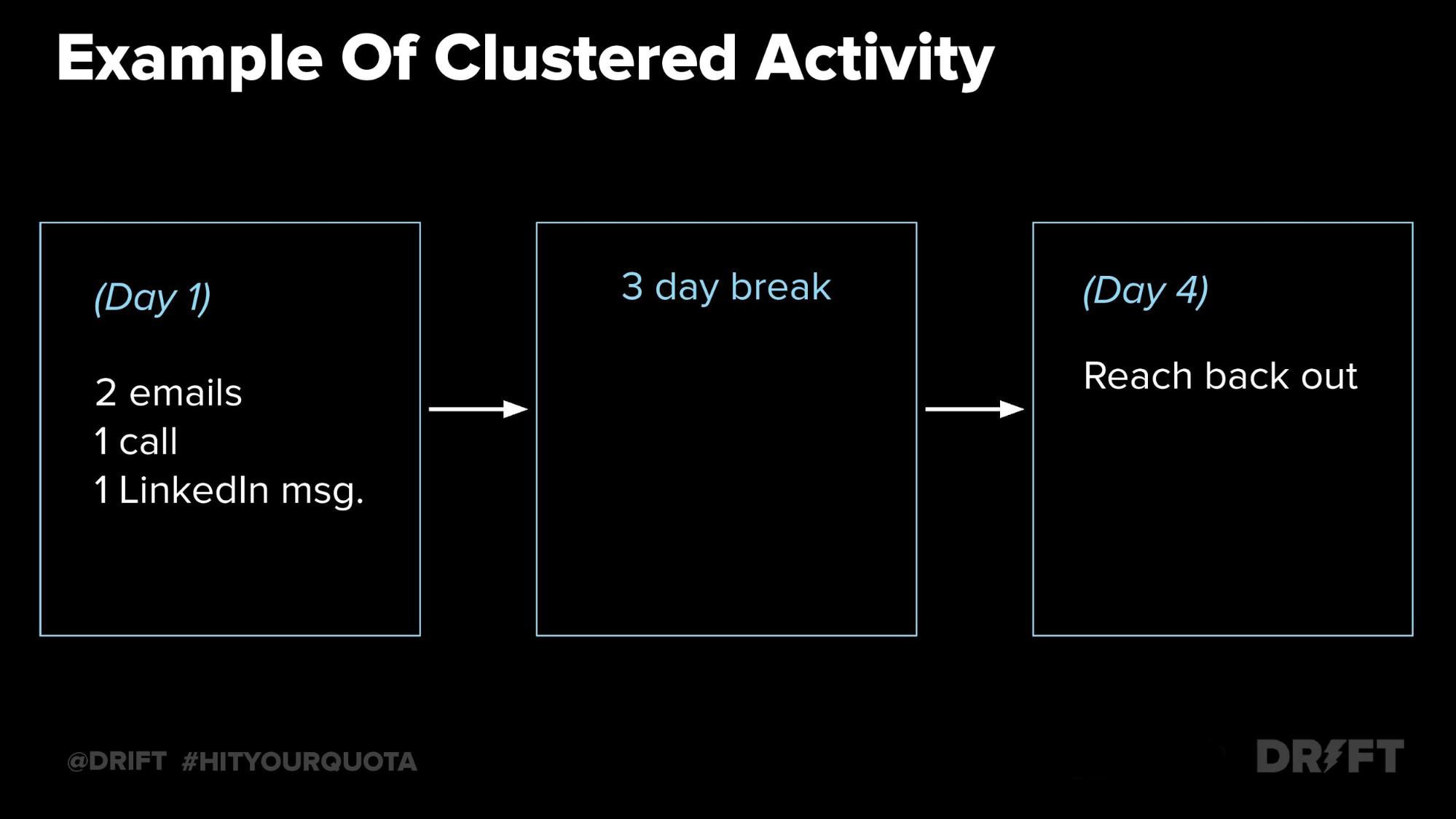
For example, you might cluster emails, a call, and a social media interaction on one day, then wait a few days before reaching back out on one platform. Then wait a few days and repeat the pattern.
8. Follow up with Your “No’s” in 60 to 75 Days
In sales, a “no” often means “not right now.” If the person on the other end of the phone really is your ICP, that’s likely to be the case. They just might be too busy or focused on other priorities.
Understand that although the timing isn’t right, it’s not a complete loss. Looking at every conversation as a hard “no” or a “yes” is a big mistake. It’s better to be polite and empathetic than to keep hounding them or drop them completely.
My best SDRs will have a list of accounts that they know will be an opportunity in March and they will send them value-adding content so that we stay top of mind pre-evaluation.
Instead, follow up with all of your post-demo “no’s” every 60 to 75 days. Keep it short, sweet, and personable.
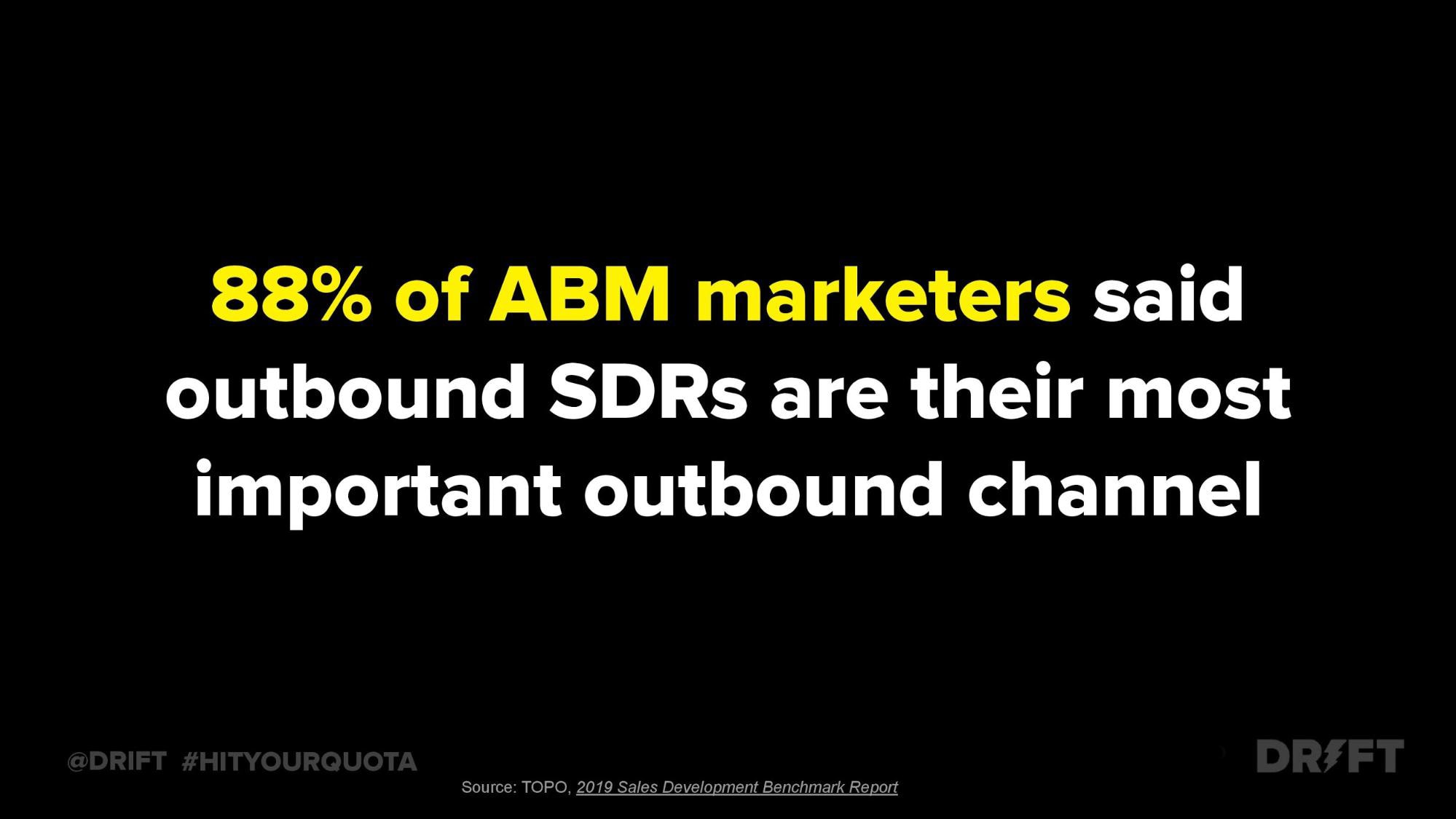
Outbound SDRs need to follow up with prospects that were uninterested, too. You may just want to space these out by 90 days since they didn’t raise their hand and ask for a sales call. But for anyone that became a lead and attended a demo, 60 days is a better bet.
With these eight strategies, you’re sure to hit your sales quota. Get out there and discover which target audiences are buying solutions like yours right now – and don’t give up.






